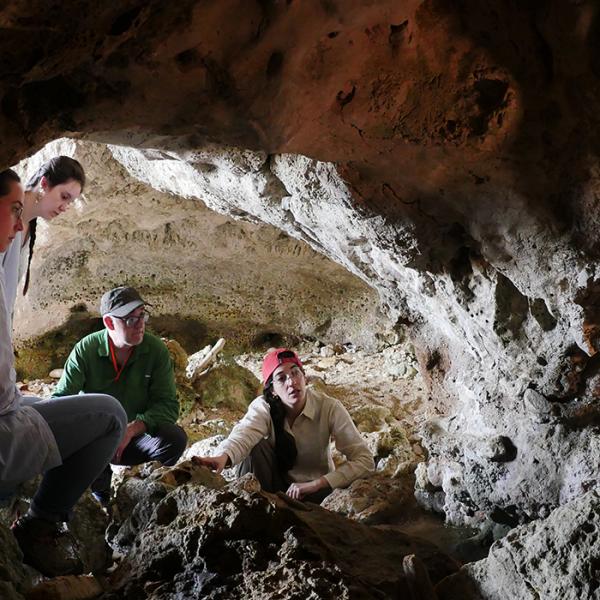Jessica Joganic
My research investigates the genetic underpinnings of variation in the craniofacial skeleton of primates. As the hominin clade is defined by three major trends in the evolution of the modern human cranial form -- increased cranial capacity, reduced facial projection, and cranial base angulation -- identifying some of the genes responsible for variation in these traits is an important step toward understanding both the selective pressures our ancestors faced and the nature of the morphological response to such pressures.
Baboons are a good model species in which to evaluate changes in the craniofacial skeleton for three reasons. First of all, they are more closely related to humans than are mice, the traditional laboratory model animal. Secondly, the three derived traits present in humans are ancestral in baboons: the baboon brain is relatively small, the face projects from the neurocranium to an extreme degree, and the skull base is largely unflexed. Thus, identifying some of the genes that affect variation in these traits in baboons will provide a list of candidate genes that may have been altered by selection in the hominin clade. Finally, baboons have been argued to be more appropriate models of early hominins than are the African great apes because they are omnivorous, inhabit savanna and gallery forest habitats likely more similar to the environment in which our ancestors evolved than are the dense forests inhabited by great apes, and have increased population sizes (like humans have) where the numbers of great apes has dramatically decreased, most likely due to large scale climate-induced environmental change. In addition, in regards to degree of facial projection, baboons are highly sexually dimorphic in this trait and even within each sex there is a lot of variation. Methodologically, large amounts of morphological variation can make it easier to identify the genetic variation contributing to degree of facial projection.
Using a sample of pedigreed baboons (genus, Papio), I will quantify craniofacial variation and examine patterns of intertrait correlations. Linkage mapping of microsatellites will be employed, I will locate quantitative trait loci, or regions of the genome that contain genetic variation that is statistically associated with phenotypic variation. I will then perform association mapping between SNP genotypes for the baboons and their corresponding phenotypes will be to localize measured craniofacial variation to specific genes. These genes will then be subjected to interspecific tests of selection to examine their molecular evolution across the primate clade and to intraspecific tests of selection to examine the distribution of genetic variation in human populations. My research will yield knowledge about how variation in the baboon skull is patterned, which affects the potential forms it can evolve into. It will also provide lists of genomic regions and candidate genes, variation in which is correlated with morphological variation in the baboon skull. Future research aims will include collaborating with molecular biologists to test the affect of the identified genetic variants on the craniofacial skeleton of model organisms, examining genetic variation in wild populations of baboons, and comparing molecular variation in species closely related to baboons that show varying degrees of facial projection, sexual dimorphism, and large body size (e.g., guenons and mandrills).



